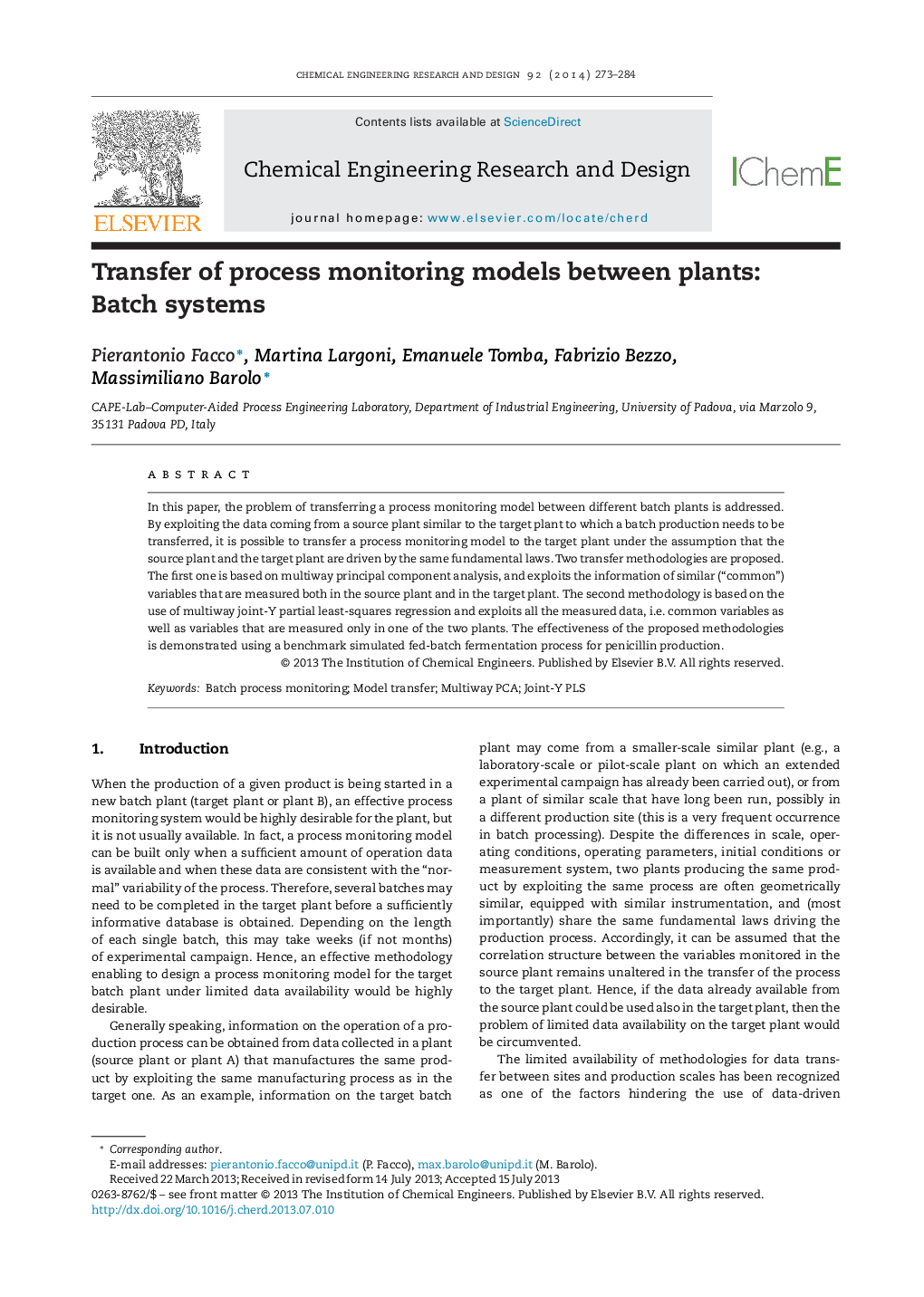| Article ID | Journal | Published Year | Pages | File Type |
|---|---|---|---|---|
| 621316 | Chemical Engineering Research and Design | 2014 | 12 Pages |
•Addressed the issue of transferring a batch process monitoring model from a source plant to a target plant.•Proposed two methodologies that exploit the information available from variables measured in both plants.•Application to a simulated fed-batch fermentation process for penicillin production.•Prompt and reliable fault detection in the target plant even for a limited number of normal batches completed therein.•Experimentation time can be significantly reduced.
In this paper, the problem of transferring a process monitoring model between different batch plants is addressed. By exploiting the data coming from a source plant similar to the target plant to which a batch production needs to be transferred, it is possible to transfer a process monitoring model to the target plant under the assumption that the source plant and the target plant are driven by the same fundamental laws. Two transfer methodologies are proposed. The first one is based on multiway principal component analysis, and exploits the information of similar (“common”) variables that are measured both in the source plant and in the target plant. The second methodology is based on the use of multiway joint-Y partial least-squares regression and exploits all the measured data, i.e. common variables as well as variables that are measured only in one of the two plants. The effectiveness of the proposed methodologies is demonstrated using a benchmark simulated fed-batch fermentation process for penicillin production.
